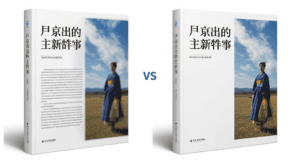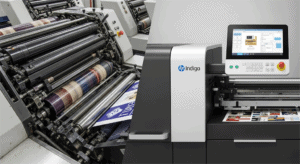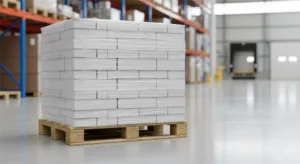Are you trying to produce a beautiful, high-quality book in China but are concerned about the risks? I’ve guided countless creators and brands through this exact process, turning their apprehension into confidence. This in-depth guide lays out the exact systems, technology, and collaborative methods top printers use to deliver world-class results every time.
High-quality book printing in China is achieved by combining advanced German and Japanese offset presses (like Heidelberg), adherence to global standards such as ISO 9001 for process and G7 for color calibration, and leveraging vast manufacturing ecosystems for specialty papers and complex finishing techniques.
In short, achieving world-class book printing quality in China depends on selecting the right partner who combines top-tier technology with a transparent, client-controlled process.
In this guide, you’ll learn:
- Why China’s modern printing industry is a high-tech ecosystem, not a gamble.
- That top printers use the same Heidelberg presses found in Western facilities.
- How international standards like G7 and ISO 9001 guarantee consistency.
- The remote proofing process that gives you complete quality control from anywhere.
- Why matching your project to the right type of printer is the most critical decision you’ll make.
Dive into the full guide below for case studies, checklists, and insider strategies to ensure your project is a success.
The Creator’s Core Dilemma: Balancing Cost, Quality, and Apprehension
You’re likely reading this because you’re facing a significant and common dilemma. On one hand, the prospect of printing your book in China offers a compelling cost advantage. This financial flexibility means you could invest the savings into higher-quality paper, a more unique cover finish, or a broader marketing campaign for your launch. This is the opportunity, the hope.
On the other hand, persistent stereotypes about “Made in China” and concerns about a lack of control when sourcing book printing services can create significant apprehension.Your book is a direct extension of your personal brand, your artistic integrity, and your professional reputation. Any compromise on quality is unacceptable. This is the risk, the fear.
The purpose of this guide is to end this “hope vs. fear” gamble. We will replace uncertainty with facts, data, transparent processes, and real industry insights to give you a clear framework for making a confident decision.
Part 1: Deconstructing the Myth – The True Foundation of High Quality
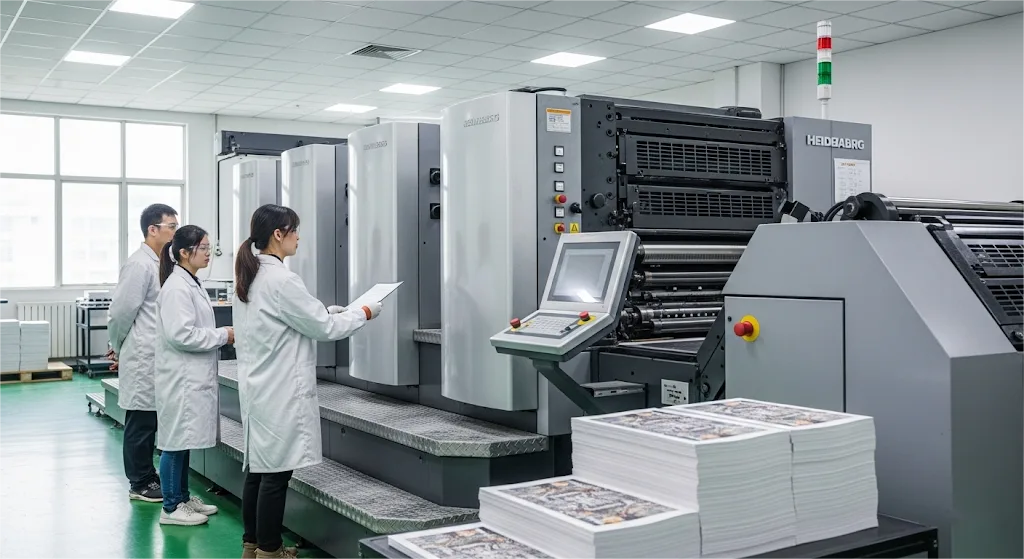
To objectively evaluate print quality, we must shift our perspective from vague impressions to solid facts. Outdated biases often stem from a lack of awareness of the incredible evolution the industry has undergone over the last two decades.
Fact #1: Quality Isn’t a Gamble; It’s the Product of a Massive Industrial System
Many view quality as a matter of luck, but in today’s China, it’s the output of a systematic, highly competitive engine.
- Immense Market Scale: China’s printing industry has a total output value of over $140 billion, making it one of the largest and most fiercely competitive print markets globally. By volume of titles and total copies, it is also the world’s #1 book publishing market.
- What This Means for You: You are not dealing with isolated, small workshops. You are tapping into a mature and professional industrial system that has been refined by intense market competition. Low-end producers who couldn’t invest in modern technology or establish stable quality control have already been filtered out. The top-tier suppliers you engage with are the proven survivors and leaders of this demanding environment.
Fact #2: Technology on Par with the World’s Best
In the capital-intensive world of printing, state-of-the-art equipment is a non-negotiable prerequisite for high-quality output, which is a key differentiator in offset vs digital printing.
- Investment in Core Equipment: Leading press manufacturers like Germany’s Heidelberg and Japan’s Komori see China as one of their most important markets, with the region accounting for 25-30% of their sales in Asia. As the CEO of Heidelberg, Dr. Ludwin Monz, often states in financial reports: “The demand from our Chinese customers is increasingly for highly automated, intelligent, and productive printing presses that deliver consistently high-quality results to serve their sophisticated global clients.”
- What This Means for You: The technology available to you at a top-tier Chinese printer is identical to what you would find at a premier facility in Europe or North America. There is no “discount” on the physical precision of the machinery—whether it’s color stability or the sharpness of detail. This equipment is the entry ticket to high-quality printing. These machines are renowned for their precision engineering and advanced autonomous printing technology, ensuring that the first copy of your book is identical to the five-thousandth in color and detail.
Fact #3: The “Ecosystem” Advantage – The Invisible Moat
This is an industry insight you will rarely find online, yet it is critically important. Choosing a good factory is smart; choosing a factory within a top-tier “printing ecosystem” is smarter.
China’s high-quality printing is heavily concentrated in two major regions: the Pearl River Delta (Shenzhen, Dongguan) and the Yangtze River Delta (Shanghai, Kunshan). This is no accident. Within a one- to two-hour drive of any top printing facility, you will find a dense network of:
- World-class paper suppliers capable of providing hundreds of specialty paper samples on short notice.
- Expert post-press workshops that focus exclusively on difficult finishing techniques like intricate laser die-cutting, multi-pass foil stamping, hand-assembly, or colored edge gilding.
- Leading-edge prepress and color management consulting firms.
- Experienced international logistics and customs clearance agents.
This highly synergistic ecosystem is the true moat protecting China’s high-quality printing industry. When you have a complex, custom project, a factory within this ecosystem can mobilize all necessary resources and produce a sample in days. In a region with an incomplete supply chain, simply sourcing the right paper could take weeks, with no guarantee of quality.
Part 2: The Quality Guarantee – A Dual Assurance of Systems and People

If advanced equipment and a robust ecosystem are the “hardware,” then rigorous systems and professional people are the “software” and “operating system” that ensure the hardware performs to its maximum potential.
The “Evidence Chain”: International Standards That Protect Your Project
Verbal promises are fleeting, which is why a verifiable system is essential. As we explain in our comprehensive guide to quality control in book printing, international certifications are the “evidence chain” you should trust.
- ISO 9001 Quality Management: This assures you that from order intake and file review to production and delivery, your project follows a strict, standardized procedure. This minimizes human error and ensures a consistent outcome.
- FSC (Forest Stewardship Council): This is about more than just ecology; it’s about your brand’s value. It allows you to proudly display the FSC logo on your book, communicating to your readers that the paper comes from responsibly managed, sustainable forests.
- G7 Master Certification: This is absolutely critical for any creator who values color accuracy. It’s a data-driven methodology for color calibration and control that helps create a unified visual appearance across all print processes.
As Jordan Gorski, Executive Director of Idealliance (the organization that develops G7 standards), explains: “G7 gives brand owners and print buyers confidence that no matter where their work is printed in the world, they will get a consistent visual appearance, transforming subjective color conversations into an objective, predictable process.”
The Human Factor: The Invisible Value of the “Shifu” and Your Project Manager
This is what elevates a project from a “good product” to a work of art, and it’s the most easily overlooked value.
- The Master Pressman (The “Shifu”): A veteran press operator with 15+ years of experience has an intuitive, almost instinctive feel for the craft. They understand how ink behaves on different paper stocks, the subtle shifts in water-ink balance, and the micro-adjustments needed at high speeds. When faced with a photograph rich in shadow detail, they can make adjustments beyond what standard data calls for, ensuring dark areas are deep but still “breathe” with detail. This is craftsmanship that cannot be programmed.
- Your Project Manager (The Merchandiser): This role is far more than a simple translator. A top-tier project manager must be an expert in three areas: design, production processes, and client psychology. They can translate your creative brief—a desire for a “warmer, more vintage feel”—into a precise technical instruction, like “suggesting a 120gsm warm-toned offset paper and slightly reducing the CMYK saturation.” They proactively identify potential problems in your files, like using four-color black for small text, and help you avoid them. This collaborative approach is a key part of how to ensure quality from start to finish.
Part 3: Your Project, Your Control – A Transparent Guide to Remote Collaboration
For an overseas client, the biggest fear is a loss of control. Our entire collaborative process is designed around one core principle: putting you in the driver’s seat.
Our “Remote Control” Workflow: Five Key Steps
This process guarantees you have full visibility and final say at every critical junction.
- Dedicated Project Manager: From day one, you will have a single point of contact who will be your guide, advocate, and problem-solver.
- Digital Proofing: We provide high-resolution PDF proofs for you to meticulously check all layouts, text, and image placements.
- Hard-Copy Proofing: This is the most critical stage. After you approve the digital proof, we will produce a physical, printed sample of your book (or key pages) using your exact chosen paper, ink, and finishes. We will ship this to you via international express. You get to hold it in your hands, see the colors under natural light, and feel the texture of the paper. Mass production will not begin until we receive your signed, physical approval of this proof, which is why choosing the perfect printing proof for your book is such an important part of the process.
- On-Press Updates: For complex projects, we can provide photos or short videos from the press run, giving you peace of mind and a window into the production process.
- Final Sample Approval: Once the books are fully assembled, we can send you one of the first finished copies for a final blessing before the bulk order is packed for shipping.
The Professional Pre-Press File Checklist
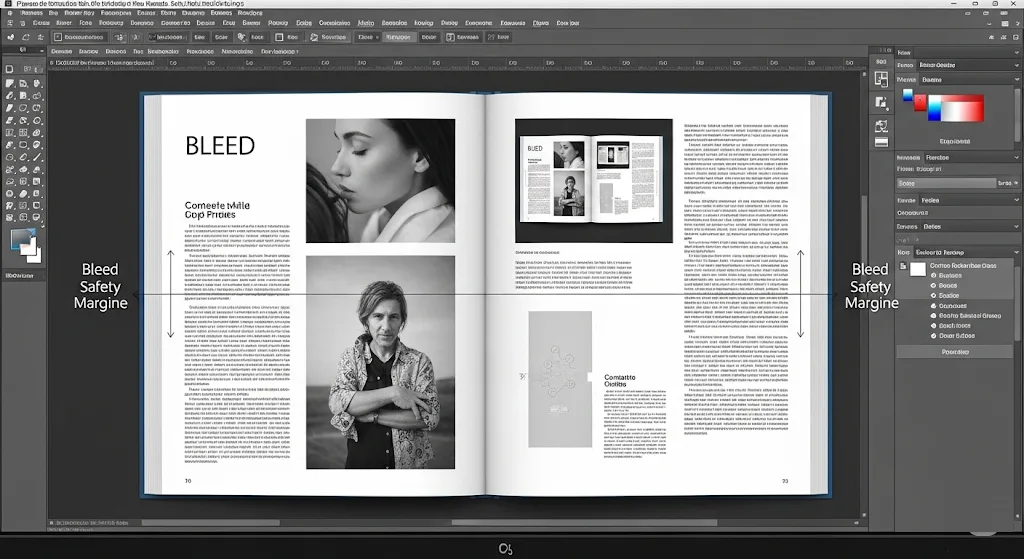
To ensure a smooth collaboration and protect your work, we strongly recommend you check your files against this list before submission. These are the same points our pre-press experts will review.
- Color Mode: All files must be in CMYK, the standard for professional printing, not the RGB mode used for screens. This prevents vibrant screen colors from appearing dull in print.
- Image Resolution: All images must be at least 300 DPI (Dots Per Inch) at their final print size. Anything less will result in a visible loss of sharpness or pixelation.
- Bleed: Any image or color block that extends to the edge of the page must extend 3mm (or 1/8 inch) beyond the final trim line. We’ve seen beautiful full-page magazine layouts ruined by a tiny white sliver at the edge because of insufficient bleed. This 3mm is your safety margin.
- Font Handling: All fonts must be converted to outlines (curves) or fully embedded into the PDF. This prevents your chosen fonts from being substituted or causing reflow issues if they are not on our systems.
- Use of Black: For small text, use plain black (C:0 M:0 Y:0 K:100) to ensure crisp, sharp edges. For large areas of solid black, use a “rich black” (e.g., C:40 M:30 Y:30 K:100) to achieve a deeper, more saturated tone.
Part 4: Beyond Printing – Logistics, Guidance, and a Partnership for the Future
Table: A Creator’s Quick Reference for Key Project Decisions
|
Decision Point |
Option A |
Option B |
Recommendation & Best Use Case |
|
Choosing Your Printer Profile |
Boutique / Specialty Printer |
High-Volume / Factory Printer |
Boutique is best for complex art books or brand projects where unique finishes and ultimate quality are paramount. High-Volume is suitable for simpler projects like standard paperbacks where cost-per-unit is the primary driver. |
|
Selecting Your Shipping Method |
Air Freight (Faster, Higher Cost) |
Sea Freight (Slower, Lower Cost) |
Use Air Freight for urgent deadlines or small, lightweight shipments (e.g., advance copies). Use Sea Freight for planned, larger quantities where budget optimization is a key concern. |
|
Defining Logistics Responsibility |
FOB (Free On Board) |
DDP (Delivered Duty Paid) |
DDP is highly recommended for most creators. It is a ‘worry-free,’ all-inclusive option where we handle all logistics to your door. FOB is for experienced importers who have their own shipping and customs partners. |
From Our Press to Your Doorstep: Demystifying International Logistics

The books are printed. Now what?” This is the final, often intimidating hurdle. We provide an end-to-end solution.
- Shipping Options: You can choose between Sea Freight (lower cost, longer transit time, ideal for large quantities) and Air Freight (higher cost, much faster, ideal for urgent deadlines or smaller shipments).
- Trade Terms Explained: We highly recommend DDP (Delivered Duty Paid) service for independent creators. This is our “worry-free” option. You pay one all-inclusive price, and we handle everything: export from China, ocean or air freight, U.S./E.U. customs clearance, import duties/taxes, and final delivery to your specified address. It’s as simple as ordering locally.
- Protective Packaging: We learned a valuable lesson years ago when a shipment to Seattle encountered an unexpectedly long, humid spell at port, causing minor moisture damage to the corners of some books. Since that day, we upgraded our entire export packaging system. Our standard procedure now involves book shrink-wrapping, reinforced corner protectors, 5-ply corrugated cartons, internal void fill, and an outer waterproof stretch wrap. We believe packaging isn’t a cost; it’s insurance for your investment.
Finding the Right Fit: A Note on “Appropriate Quality”
Many clients search for the “best quality printer,” but this is a misconception. There is no absolute “best,” only the “best fit for your specific project.” The industry is highly specialized:
- Volume Printers: Excel at producing millions of textbooks or paperbacks at an incredible cost per unit. They are not set up for the nuance of an art book.
- Boutique Printers: Specialize in high-end art books and luxury brand editions. Their attention to detail is superb, but their costs and minimum order quantities are higher.
- Flexible Printers: (Like us) We are equipped to handle a wide range of projects, from several hundred to many thousands of copies, combining the quality control needed for boutique projects with the efficiency required to remain cost-effective. Ask a potential printer what percentage of their work is similar to yours. The answer is often more telling than the price quote.
Conclusion: Choosing a Partner for Your Growth
As the legendary Dutch book designer Irma Boom famously said, “The physicality of the book—the weight, the texture of the paper, the smell of the ink—is part of the message.” We believe this to our core.
Choosing a printing partner in China is no longer a choice of compromise. It is a strategic decision to leverage a world-class ecosystem, synchronous technology, and proven expertise. Forward-looking trends, like strict environmental regulations acting as a quality filter and the rise of “digital + offset” hybrid models, are only strengthening this position.
This hybrid model allows you to print a small batch digitally for a crowdfunding campaign or market test, then seamlessly switch to offset for a larger run, minimizing your risk. We know that we aren’t just shipping you a product; we are delivering your dream, your business card to the world.
Ready to take the next step in your publishing journey?
Schedule a Consultation: Speak one-on-one with a print expert to discuss your project in detail.



